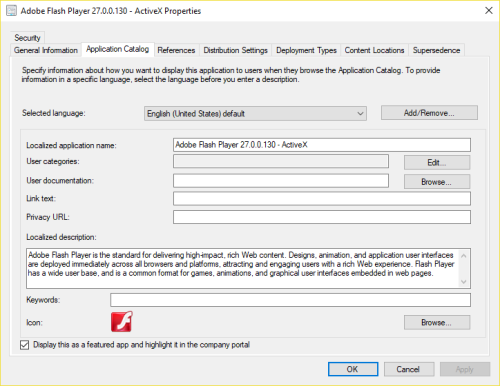
# Get all entries that match our criteria. # Default behavior uses -match which is essentially "DisplayName contains VLC" This is what you see in Add/Remove Programs. # Look at a machine with the application installed unless you're sure the formatting of the name/version $uninstReg = Define the App Name to look for #Define Registry Location for the 64-bit and 32-bit Uninstall keys # to access the 64-bit registry on 64-bit Windows. # The ScriptBlock method used here is to allow a 32-bit agent process Requirement - Download the uninstall_flash_player.exe from the link above, and upload it into your Worklet. It is disabled by default in most of these browsers, and can be managed with policies). Managing that integration is not in scope for this Worklet (as that topic would better be covered on how to manage Flash per browser. “Most” modern browsers have built-in Flash support. Please visit the Flash Player Help page for instructions on enabling (or disabling) Flash Player in various browsers. These instructions are NOT applicable to Flash Player included with Microsoft Edge or Internet Explorer on Windows 8 and later or with Google Chrome on all supported operating systems. Please note the information in RED at the top of the uninstall directions: Īdobe has provided an uninstaller that works fairly well to remove stand-alone installations of Flash Player. BatchPatch Stuck Searching for Available Updates on a Windows 8.As you probably have already heard endlessly, Adobe Flash Player will reach end of life on December 31 2020.

Generally one of the following two registry keys will contain the UninstallString value that we are looking for: To uninstall a specific player type (ActiveX, NPAPI, or PPAPI), use the following: uninstallflashplayer.

By now most of you are probably aware that Apple is no longer going to be supporting or updating QuickTime for Windows:


 0 kommentar(er)
0 kommentar(er)
